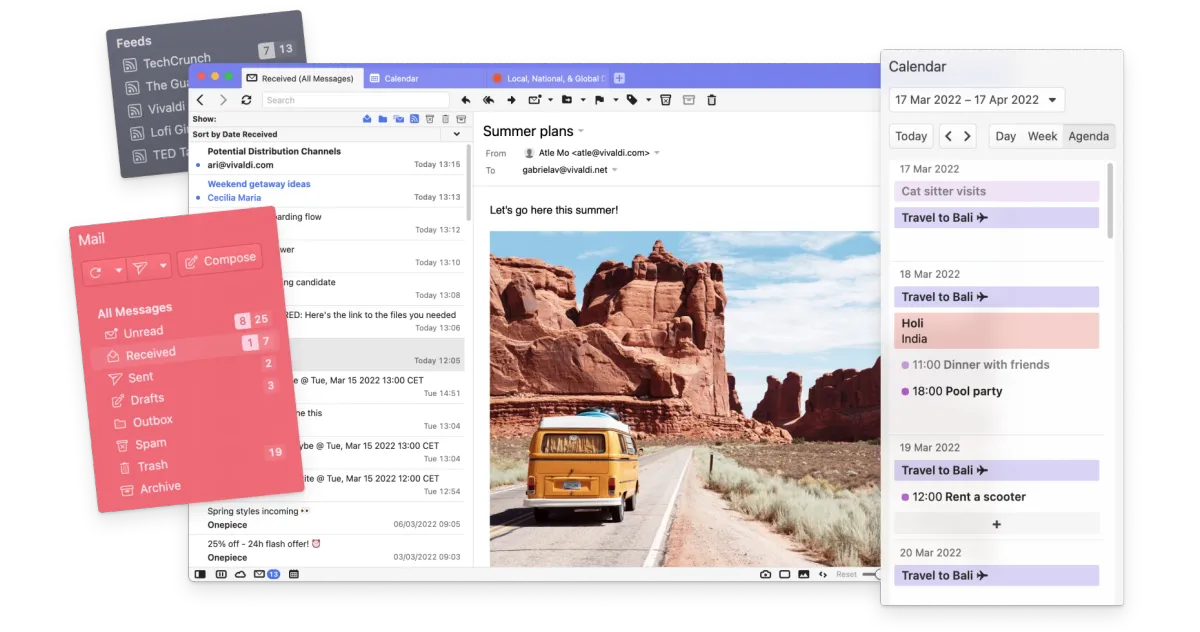Thunderbird, The Free Email and Productivity App: Can it Replace Outlook?
Table of Content
Microsoft Outlook has long been the go-to email and productivity app for professionals. However, not everyone is ready to pay for an Office 365 subscription or deal with Outlook's sometimes clunky performance.
Did you try Thunderbird, the free and open-source alternative developed by Mozilla. Do you think it can Thunderbird truly replace Outlook?
Let’s dive into its features, platform compatibility, and ease of use.
Supported Platforms
Both Outlook and Thunderbird are cross-platform applications, but their scope differs slightly:
- Outlook: Available on Windows, macOS, and mobile (iOS and Android). Outlook’s tight integration with Microsoft Office tools and Exchange servers makes it a favorite among enterprises.
- Thunderbird: Runs on Windows, macOS, and Linux. Its open-source nature and community-driven development make it ideal for users looking for a lightweight and customizable email client. As someone who uses Thunderbird on macOS and Linux, I can attest to its smooth performance on both platforms. It is also available for Android devices.

Features Comparison
Here’s a quick overview of what each offers:
| Feature | Thunderbird | Outlook |
|---|---|---|
| Price | Free and open-source | Subscription required for full use |
| Customizability | High (add-ons and themes) | Limited |
| Calendar Integration | Built-in with Lightning extension | Built-in |
| Support for IMAP/POP | Yes | Yes |
| Offline Access | Yes | Yes |
| Third-Party Add-ons | Extensive library | Limited |
| Productivity Tools | Basic task management and reminders | Advanced task and project management |
| Mobile Support | None (requires third-party apps) | Native apps for iOS and Android |
| Encryption Support | Yes (with add-ons like Enigmail) | Yes (with Microsoft 365 subscription) |
| File Storage | Limited to local or add-on cloud | Integrated OneDrive and SharePoint |
Thunderbird shines with its flexibility and ease of use, particularly for those who like to tweak their tools.
Outlook, on the other hand, excels in enterprise environments where integration with Microsoft’s ecosystem is essential.
By the Numbers
- As of 2024, Outlook boasts over 400 million active users globally, thanks to its widespread use in corporate environments. (Source)
- Thunderbird, while not as widely used, still has a strong community with over 25 million monthly active users. Its user base continues to grow due to its cost-free nature and robust features. (Source)
How to Backup and Export Data in Thunderbird
One of the standout features of Thunderbird is its ease of data management. Here’s how you can back up and export your data:
- Backup Thunderbird Profile:
- Navigate to your Thunderbird profile folder. On macOS and Linux, this is usually located in
~/.thunderbird/. - Copy the entire profile folder to an external drive or cloud storage for safekeeping.
- Navigate to your Thunderbird profile folder. On macOS and Linux, this is usually located in
- Export Emails:
- Install the add-on “ImportExportTools NG” from the Thunderbird Add-ons Manager.
- After installation, right-click on a folder (e.g., Inbox), go to "ImportExportTools NG," and select "Export all messages in the folder" to save emails in your preferred format.
- Backup Address Book:
- Go to the Address Book section in Thunderbird.
- Select "Tools" > "Export" and save your contacts as a
.csvor.ldiffile.
Final Thoughts
Thunderbird may not have Outlook’s enterprise-level polish or native mobile apps, but it offers unmatched flexibility and freedom—all for free.
For individuals and small businesses looking to avoid costly subscriptions, Thunderbird is an excellent choice.
If you’re a macOS or Linux user like me, Thunderbird’s cross-platform support and lightweight design make it a no-brainer. Try it out and see if it fits your workflow!
Do you use Thunderbird or Outlook? Share your experiences in the comments below!
Looking to try more open-source Free Clients?




















